Section 0: Module Objectives or Competencies
| Course Objective or Competency | Module Objectives or Competency |
|---|---|
| The student will be able to explain the features of specialized web application design approaches, especially the Web Information Systems Development Methodology (WISDM). | The student will be able to explain the need for a strategy for Web IS development. |
| The student will be able to explain the Multiview approach to software development. | |
| The student will be able to explain the WISDM approach to web application development. |
Section 1: Web Application Design Methods
As noted in a previous section, web application development is unique.
A variety of approaches have been proposed to deal more effectively with its extreme demands.
- WISDM
- Web Science
- Web Engineering
This set of notes will focus on WISDM, making this one of the few courses that literally increases your WISDM!
Here is a review page to accompany my notes.
Section 2: A Strategy for Web IS Development
The Web Information Systems Development Methodology (WISDM) is an information systems development methodology expressly designed to develop web information systems, and is articulated through the Multiview framework to ensure adequate consideration of the technological, organizational, and human aspects of IS development.
- WISDM
- debuted in 2002 (Vidgen)
- offers a methodology for the socio-technical view;
- illustrates a socio-technical framework.
- WISDM uses the Unified Process (UP) as a powerful generic framework that can be flexibly tailored and extended by special techniques to suit the particular project.
- It introduces various techniques to complement UP activities in
order to better address the specific features of Web-IS such as
- User-orientation, broad view of requirements, specific architectural patterns, graphic design, navigation, etc.
Video Overview of WISDM
Section 3: The Multiview Approach and WISDM
- Multiview's fundamental assumption: An IS methodology that relies overmuch on an engineering approach and technical rationality is, by itself, an insufficient foundation for IS development.
- Foundations of Multiview: Needs of computer artifacts, organizations, and individuals should be considered jointly!
- Major concern of Multiview: Negotiation between technological, organizational, and human aspects of IS development.
-

Aspects of IS development
Aspects of the WISDM Matrix
There are five aspects of the WISDM matrix.
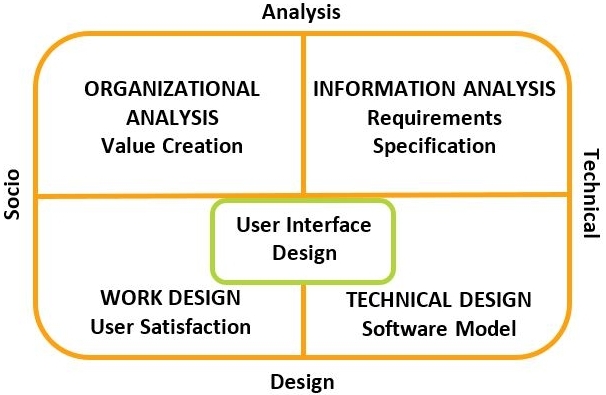
WISDM as emerging methodology from the Multiview framework
- The analysis stage is divided into organizational analysis (where goals of the Web project are integrated into the organization’s general strategy) and information analysis (where requirements are specified).
- The design stage is also divided into two processes: work design (where the characteristics of the Web project are developed in line with user/customer needs) and technical design (where the project is physically developed through programming), while user-interface design bridges the two processes.
This methodology stands out due to its heavy emphasis on the creative aspects of Web development, while more traditional methodologies are too reliant on IS-specific terminology and principles.
We'll examine each of the aspects individually...
Section 4: Organizational Analysis
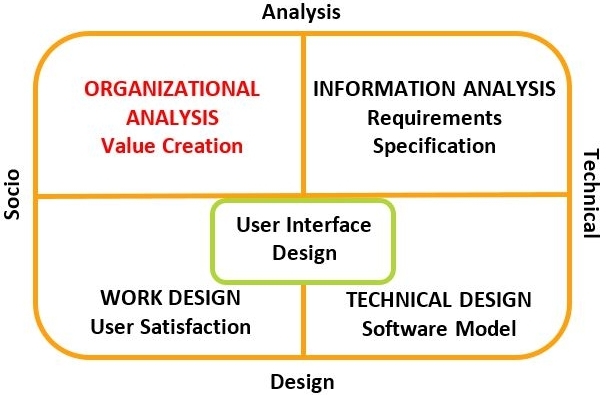
The Organizational Analysis Aspect of the WISDM Matrix
- Business (strategy)
- What business is the Organization in?
- What are the products and services?
- Products and services
- What are the sources of revenue?
- What are the benefits to the business actors?
- Who are the customers?
- Who are the competitors?
- Marketing strategy (How to compete)
- What is the organization’s marketing strategy?
Section 5: Information Analysis
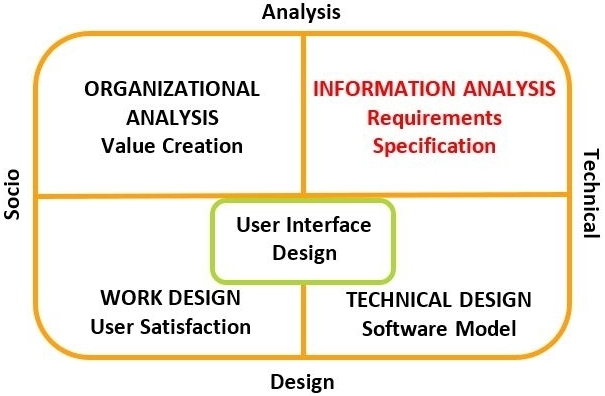
The Information Analysis Aspect of the WISDM Matrix
Elements of the analysis model
- Data model
- Flow model
- Class model
- Behavior model
Section 6: Work Design
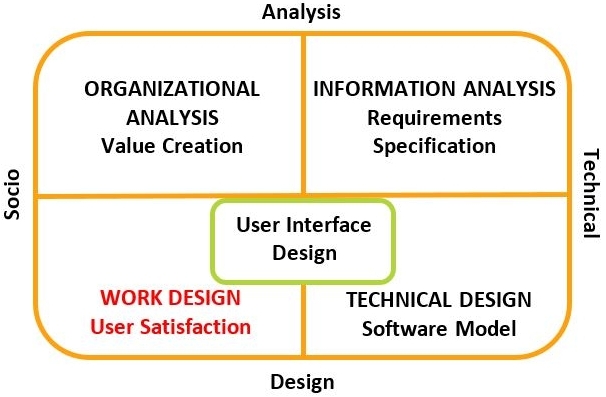
The Work Design Aspect of the WISDM Matrix
- Foundation: Genuine participation involves users, managers, developers, and others who influence each other's plans policies and decisions, thus affecting future outcomes.
- Measure user satisfaction and quality.
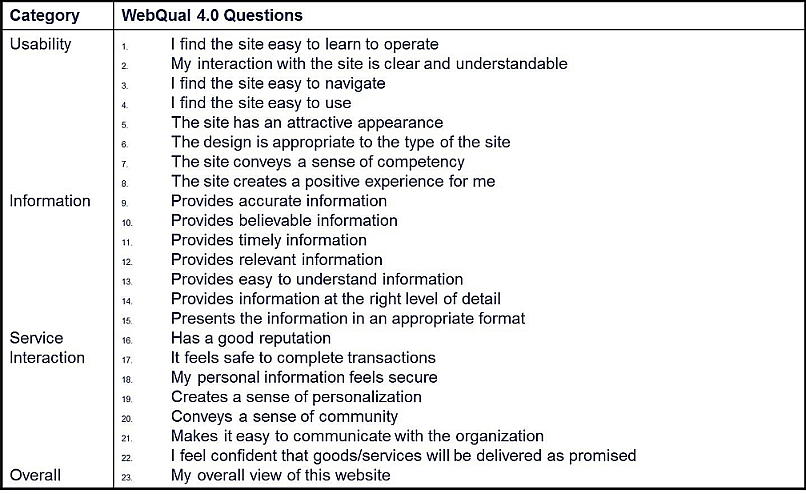
Quality workshop, WebQual
Section 7: Technical Design
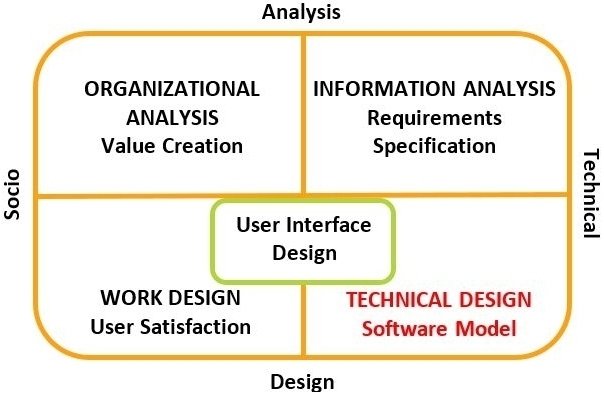
The Technical Design Aspect of the WISDM Matrix
Elements of the design model
- Data design
- Architectural design
- Component design
- Interface design
- Aesthetic design
- Navigation design
Section 8: Human—Computer Interface
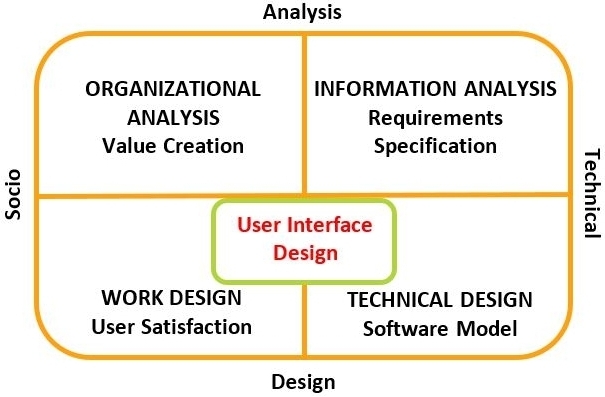
The Human-Computer Interface of the WISDM Matrix
Human-Computer Interface design is located in an area overlapping technical design and work design as it involves both.
- The Interface design draws on website design principles for page layout, navigation schemes and usability in the context of work design.





